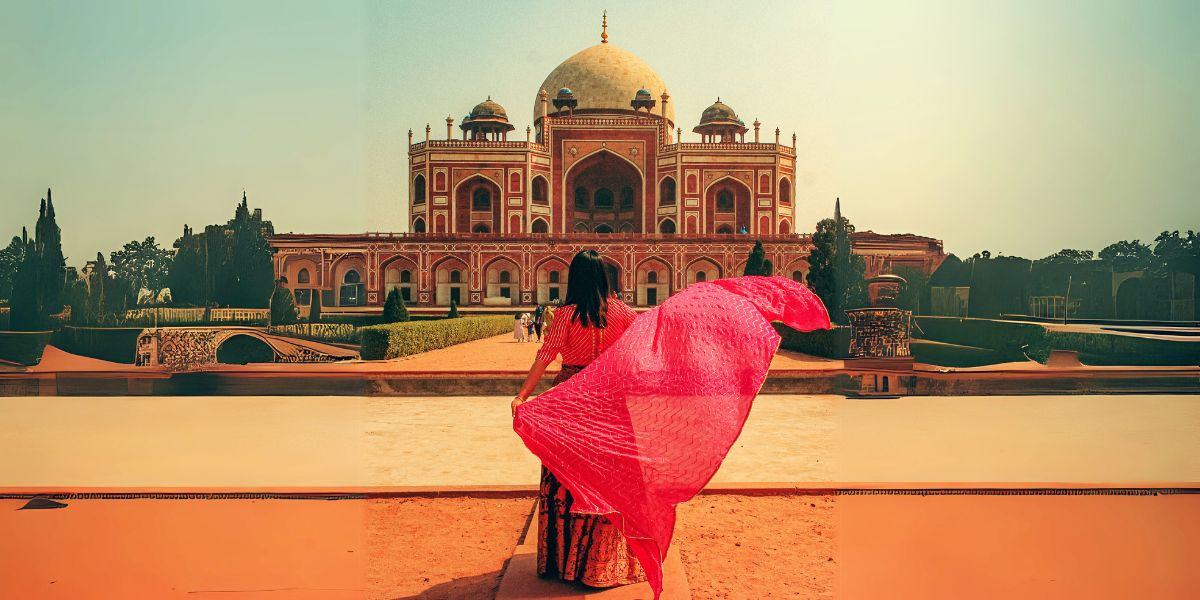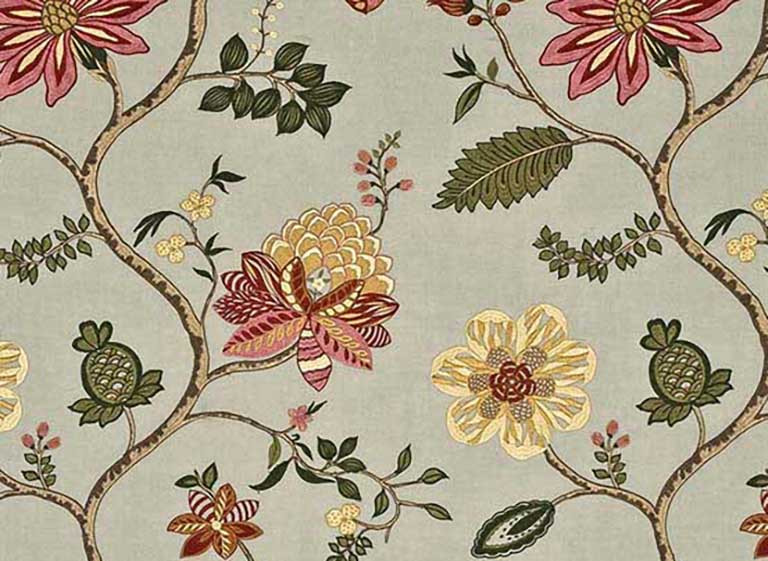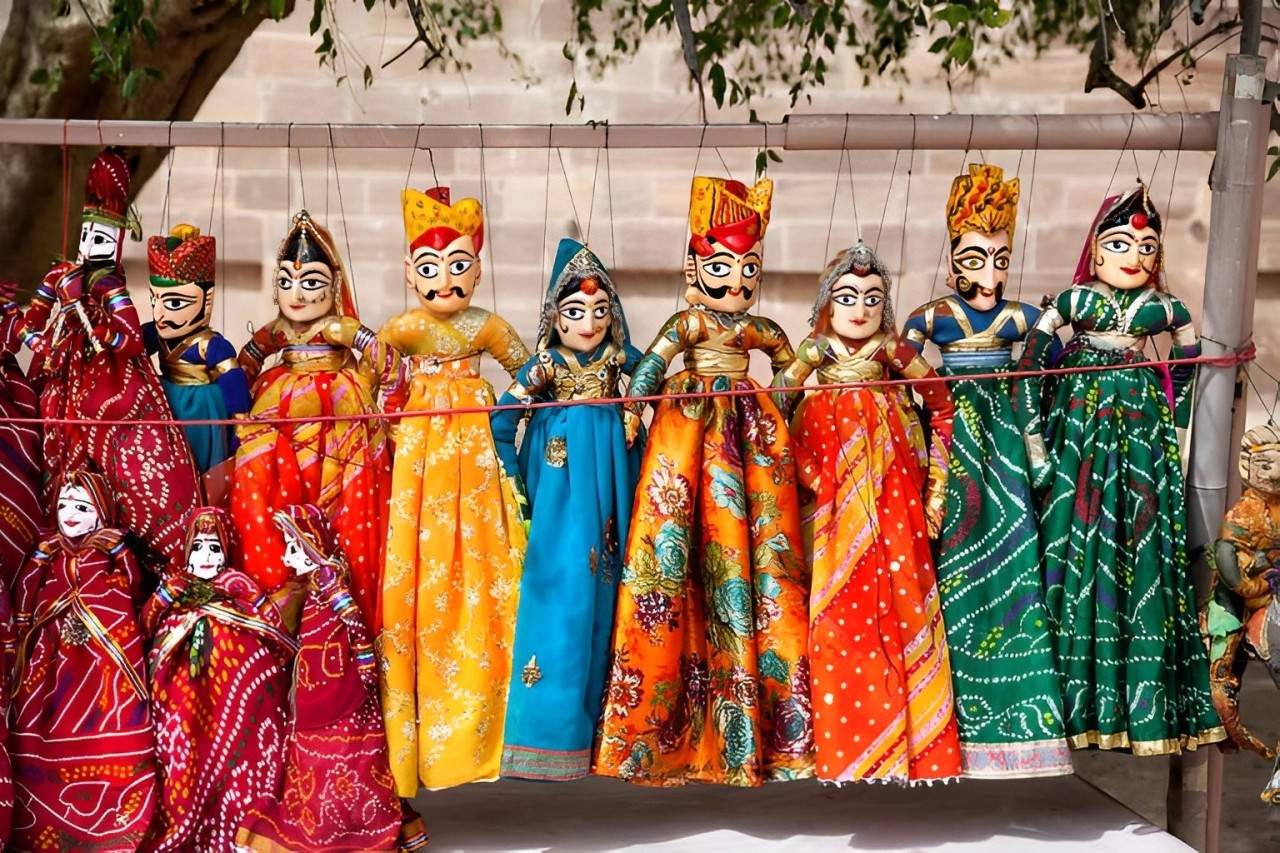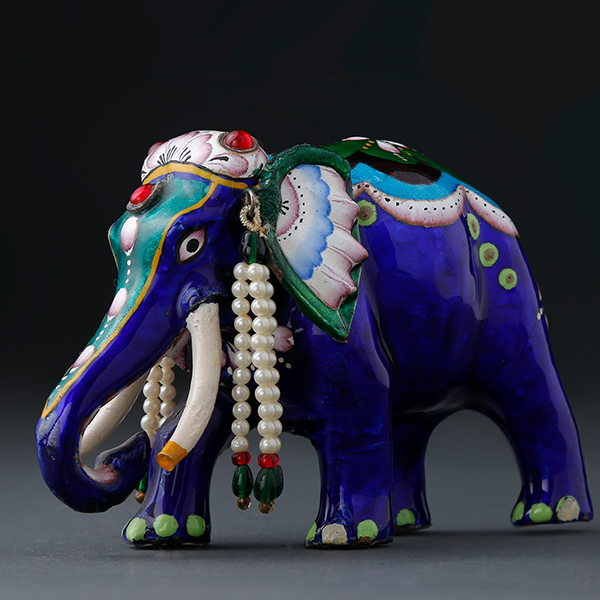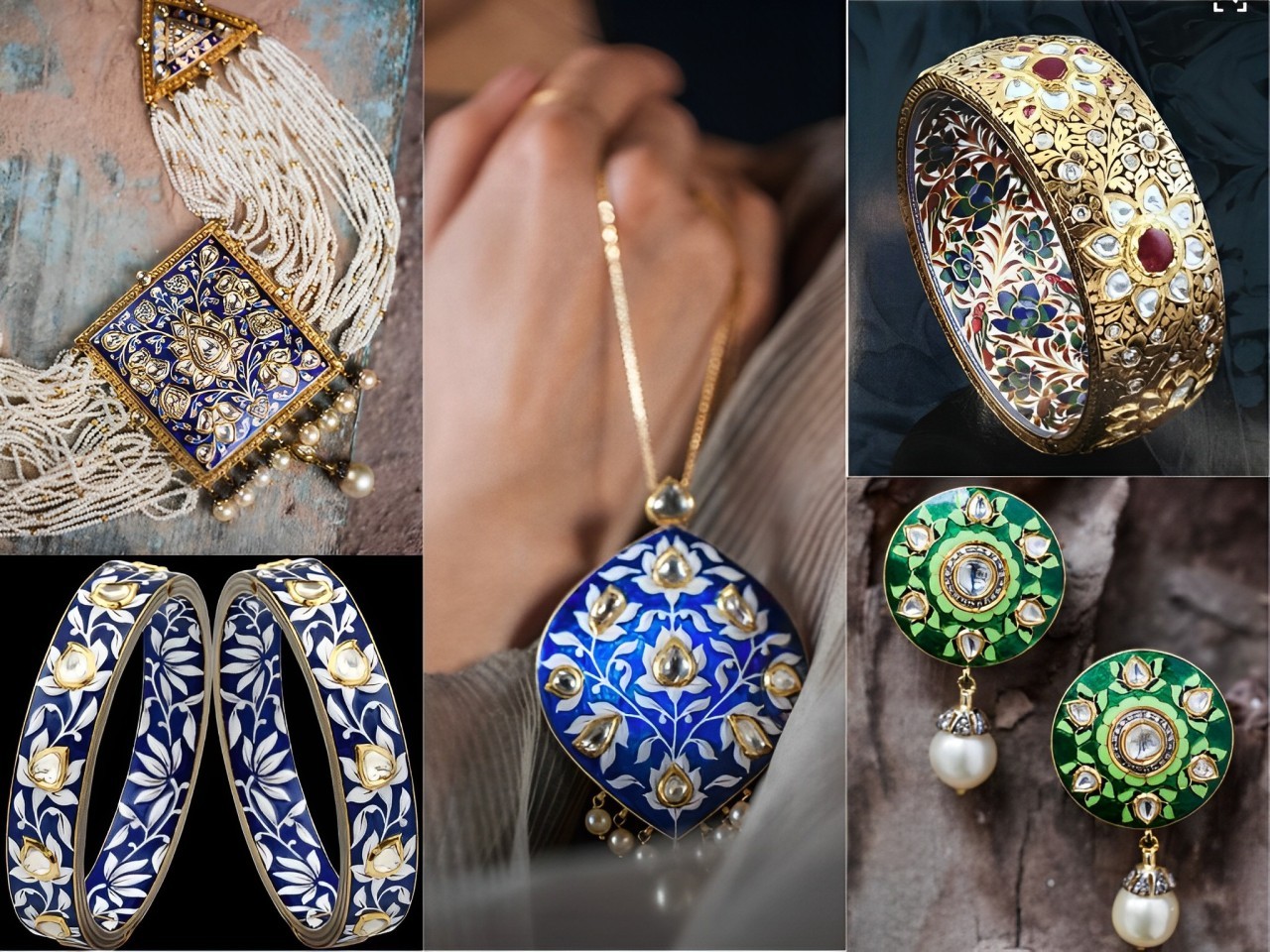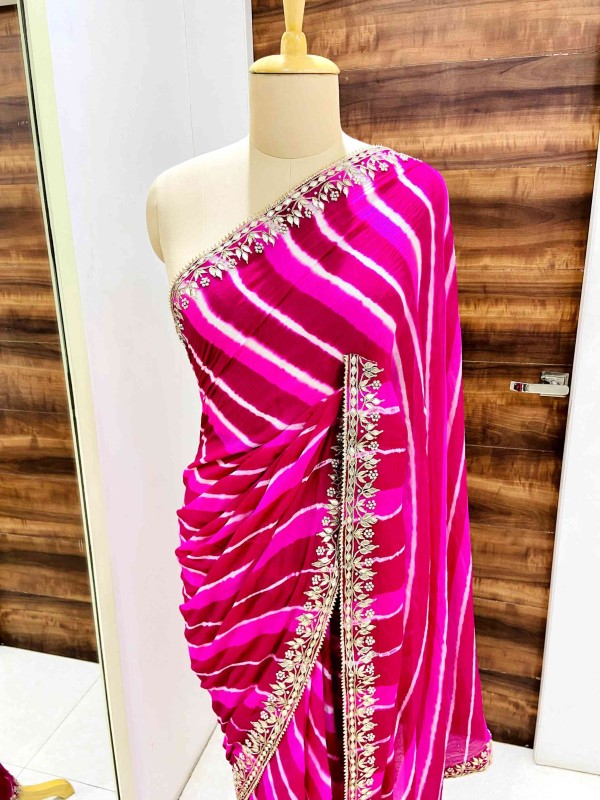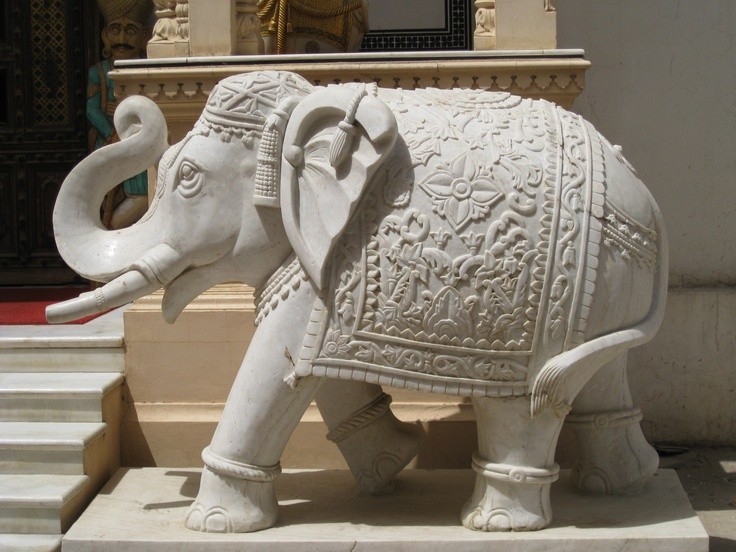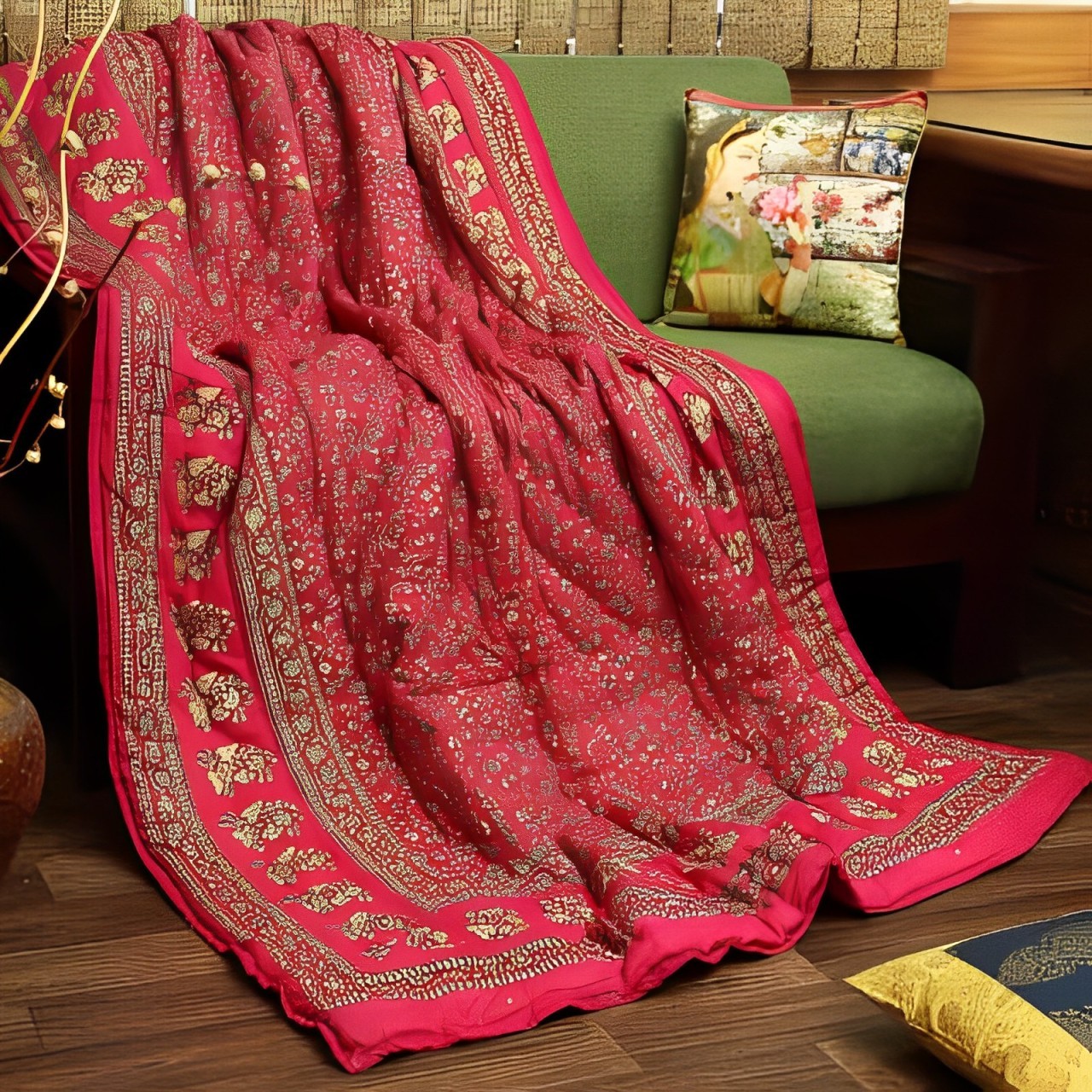Rajput Painting
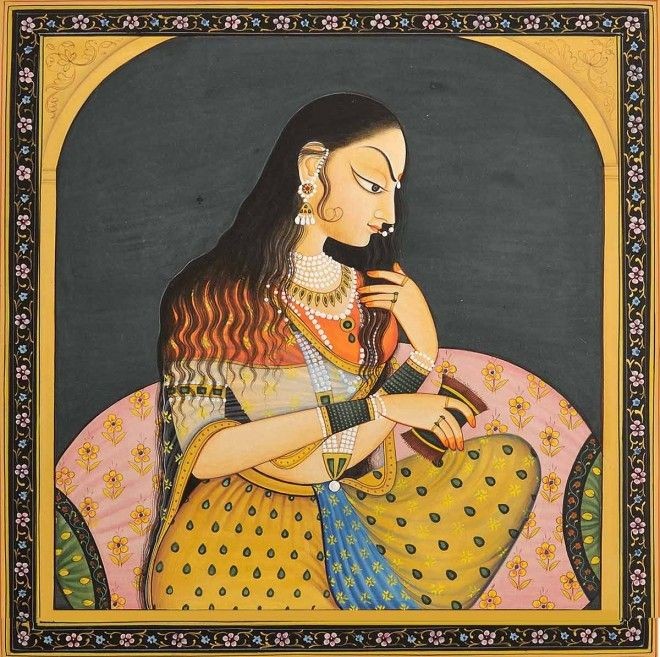
Rajput paintings are a style of Indian Painting that originated in the royal courts of Rajputana kings of Rajasthan in the late 16th and early 17th century.
The term ‘Rajput Paintings ‘was coined by scholar Anand Coomaraswamy in 1916 to describe these paintings because most of the rulers and patrons of these kingdoms were Rajputs. These painters displayed the bravery of Rajputs by fighting for their master’s honour. Along with numerous other works of art, including miniatures, calligraphy, and masks.
Each Rajput kingdom had its own painting style, with bright colours, intricate designs, and attention to detail. The Rajput Schools of Painting or The Rajasthani School of Painting refers to the schools of Painting that prospered in princely dynasties and stretches of what is now roughly Rajasthan and parts of Madhya Pradesh, such as Mewar, Bundi, Kota, Jaipur, Bikaner, Kishangarh, Jodhpur (Marwar), Malwa, Sirohi, and other such principalities between the sixteenth and early nineteenth centuries.
History of Rajput Paintings
When Aurangzeb became Emperor, he did not promote art like his predecessors. Before that, miniature paintings were very popular in Mughal courts. As a result, the artists who were working in Mughal courts started moving to other courts in search of work. Many of these artists moved to Rajputana courts and that’s how Rajputana paintings developed and evolved.
Characteristics of Rajput Paintings
- The origins of Rajput miniature painting technique can be traced back to Indian civilization.
- The pictorial art of this school was influenced by Vaishnavism, Shaivism, and Shakti cults.
- The numerous Krishna cults provided a rich canvas for the painter, who, with his artistic skill and passion, made a significant contribution to the development of Rajput miniature paintings.
- The Rajput School of Painting is known for its bold lines and vibrant, clashing hues.
- Figures are depicted flat, with minimal effort made to portray perspective in a naturalistic manner.
- The surface of the artwork is occasionally divided into multiple compartments of different colours to identify one scene from another.
- The Mughals’ influence can be seen in the refinement of drawing as well as the inclusion of some naturalism in figures and trees.
- They highlighted societal values and the reforms that monarchs made for the good of society, in addition to showing tales from the Ramayana and the regal lifestyle of kings and queens. The backdrops of the Rajput School’s paintings set them apart.
- The canvas for this school of Painting was made of paper, ivory, and silk.
- Subjects of Rajputana Paintings
The subjects of Rajputana paintings varied a great deal. But the most common topics were portraits of the ruling family, who were often shown engaged in battle, hunting of their routine activities. The others revolved around the religion and celebrated Indian epics like Ramayana and Mahabharata. The main focus was on narrative scenes from these epics, and lives of Lord Rama and Lord Krishna. Some other paintings portrayed landscapes, court scenes, pictures of royal pursuits and genre scenes of unnamed people.
Themes of Rajput Painting
The themes of Rajput Painting can be divided into 3 categories: Chief Theme, Base Theme and Colour Theme.
Chief Theme
The chief theme of Rajput miniature paintings depicts the life of Lord Krishna, the Great Epics of Ramayana and Mahabharata, landscapes, and humanity are among the major themes of Rajasthan Paintings of India.
Rajput paintings depicting episodes from Krishna’s life were popular in the 18th and early 19th centuries. Ragamala and spiritual matters were also popular themes in the nineteenth century.
Base Theme
The basic theme of Rajput paintings depicted that they were painted on palace walls, fort interior rooms, and other locations.
Colour Theme
The colour inspiration for Rajput paintings was taken from Minerals, plant sources, and conch shells, and precise colours were used.
Schools of Rajput Painting
Rajput paintings are classified into several sub-genres, each of which is termed the princely state in which it was established.
Mewar School
- During the years of relative peace and prosperity, the Mewar rulers appear to have patronised art, and there appears to have been an exceptional efflorescence.
- There are many different types of Rajput painting styles in Mewar schools. Some of them are – Nathdwara style, Devgarh style, and Shahpura style.
- Early Mewar paintings are dominated by the extraordinary figure of Sahibdin.
- During this time of Mewari painting, Sahibdin displays the Rasikapriya, the Ramayana, and the Bhagavata Purana.
- After Sahibdin’s death, the style of Mewar’s paintings changed. The majority of the paintings depicted life in the courts of Mewar.
- The period’s hallmark is the amazing ‘tamasha’ paintings, which represent court ceremonies and city views in extraordinary detail.
Bundi School
- The twin kingdoms of Bundi and Kota are known as Hadoti. The sister republics, which were formed by splitting the older Bundi kingdom between two brothers, have closely intertwined histories and artistic traditions.
- The monarchs of Bundi and Kota were devout Krishna devotees who declared themselves to be mere regents in the 18th century, ruling on behalf of the god who was the true king.
- The Bundi school was known for its detailed paintings of natural plants. Human faces were spherical, with a pointed snout in the artwork.
- The sky is painted in a variety of colours, with a red ribbon visible for the most part.
Amber - Jaipur School
- The Amber School, also known as the ‘Dhundar’ school, may be seen in Rajasthan’s Bairat wall paintings, and its oldest evidence can be found there.
- Paintings can also be found on the palace walls and the tomb of Amer palace in Rajasthan.
- The paintings have a folk-style finish, despite the fact that some of the men are dressed in Mughal-style clothing and headpiece.
- This school reached its apex under the reign of Sawai Pratap Singh in the 18th century.
- Suratkhana, or the painting department, created miniatures for the Bhagavata Purana, Ramayana, Ragamala, and many other portraits.
Malwa School
- One of the most extensive schools of painting is found in Jodhpur and Bikaner, which are both ruled by the Rathods, and Jaisalmer, which is dominated by the Bhatis.
- Jodhpur, like Bikaner, was a desert kingdom that flourished as a result of its Mughal relations.
- In paintings from the 15th and 16th centuries, men and women wore brilliantly coloured clothing.
- Throughout this time, they followed Mughal traditions, but the Rajput element became increasingly dominant after the 18th century, as seen by an inflow of paintings with a linear rhythm and bright colours.
- Many fine paintings may be found in the Jodhpur Academy, but the focus has always been on those painted during Man Singh’s reign (1803-1843).
Kota School
- Bundi’s illustrious painting legacy produced one of Rajasthan’s most illustrious schools, Kota, which excels in depicting hunting scenes and expresses an unparalleled passion and obsession with animal pursuit.
- Kota’s paintings are known for their spontaneity, calligraphic execution, and attention to distinct shade, particularly the double–lid eye.
- The Kota School’s artists excelled at depicting animals and warfare.
Marwar School of Painting
- The Marwar School of painting is a distinctive style of Rajasthani painting that originated in the Marwar region of Rajasthan, India.
- The paintings developed in the royal court of Bikaner, Kishangarh, Pali, Nagaur, Ghanerao, and Jodhpur are collectively called “Marwar school of Painting”, and they reflect a significant influence of the Mughal school of art.
- The Marwar School of painting was prominent from the seventeenth to the nineteenth centuries. During this time, it flourished under the patronage of the Rajput rulers of Jodhpur and other parts of Rajasthan.
- The magnificence of the Marwar School of Painting can be seen in a variety of styles, including the Jodhpur style, the Bikaner style, and the Kishangarh style. However, each style has unique features and characteristics.
- Marwar paintings depict themes like courtly life, hunting scenes, and religious iconography.
- Marwar paintings are characterized by their vibrant colours, intricate designs, and depictions of scenes from Hindu mythology, legends, and folk tales.
Jodhpur School
- A Ragamala set painted by artist Virji in 1623 is one of the first Pali sets.
- Maharaja Jaswant Singh (1638–1678) ushered in a flourishing phase of painting in the mid-seventeenth century.
- He patronised various Krishna-related subjects, the most renowned of which being the Bhagavata Purana, due to his fondness for Shrinathji’s Vallabha cult.
- The reign of Man Singh (1803–1843) corresponded with the penultimate phase of the Jodhpur painting innovation.
- The Ramayana (1804), Dhola-Maru, Panchatantra (1804), and Shiva Purana were all important sets painted during his period.
Bikaner School
- In 1488, Rao Bika Rathore founded Bikaner, one of Rajasthan’s most powerful kingdoms. Anup Singh (1669–1698) established a library in Bikaner that became a repository for manuscripts and artworks during his reign.
- In the seventeenth century, several Mughal atelier master artists visited and worked in Bikaner.
- Blue, green, and red colours are used frequently.
- Turbans in the style of Shahjahan and Aurangzeb, as well as Marwari high turbans.
Kishangarh School
- In 1609, Kishan Singh, one of the kings of Jodhpur, formed the state of Kishangarh.
- Artists were already working at the Kishangarh court by the mid-seventeenth century, under the patronage of Man Singh (1658–1706).
- Kishangarh’s paintings depict the most romantic legends, such as Sawant Singh and his beloved Bani Thani, as well as the blending of life and mythology, passion, and bhakti.
- They also depicted Radha and Krishna’s spiritual and romantic interactions in great detail.

